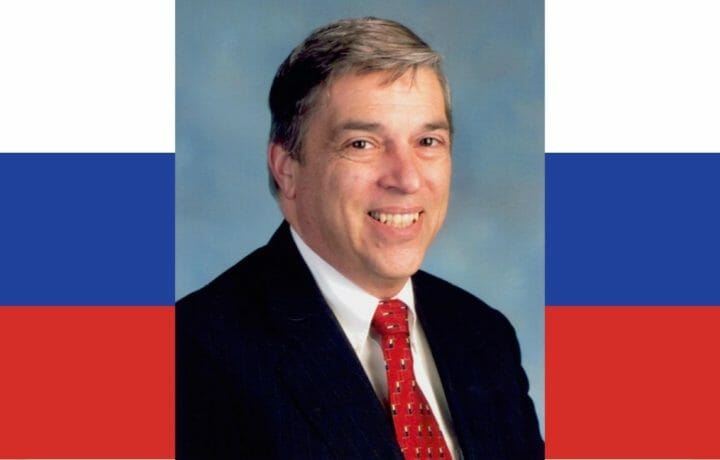On this day in history (February 18), one of the most famous and damaging insiders within the FBI, Robert Philip Hanssen was arrested. He worked as a source for the USSR and subsequently The Russian Federation. Twenty years ago today, Hanssen was arrested on February 18, 2001 when he was servicing a dead drop (covert cache of classified documents) where he was leaving classified documents to be clandestinely picked up by a Russian intelligence officer.
The affidavit in support of the arrest of Hanssen lays out the depth of his subterfuge. On July 6, 2001, Hanssen subsequently pled guilty to 15 charges of espionage and receiving in excess of $1.2 million for his efforts on behalf of Russia.
He is currently serving a life sentence (without possibility of parole) at the United States Penitentiary Administrative Maximum Facility in Florence, Colorado (aka ADX Florence in a 7-by-12 ft cell with four slit windows where he sits for 23 of 24 hours each day.

Hanssen’s espionage revisited
When looking back at the damage done by Hanssen, we have to measure with lives lost. Hanssen is believed to have identified hundreds of individuals of interest to U.S. intelligence including many who were active sources of United States intelligence. Many were recalled to Russia, arrested, tried, and executed.
One of these was retired Russian army general, Dimitri Polyakov, known by the code name “Top Hat.” Hanssen identified Polyakov to Russia in 1979, which was early in Hanssen’s 20-plus year on and off relationship with Russian intelligence.
Polyakov was assigned as a military attaché to the Soviet mission in New York City in the late 1950s, who volunteered to U.S. intelligence on October 30, 1961 and was subsequently handled by the FBI and then jointly with the CIA. Polyakov is credited with providing intelligence which staved off many a Cold War crisis between the United States and the Soviet Union and as former Director of the CIA James Woolsey said, he was the “jewel in the crown who kept the Cold War from becoming hot.”
Polyakov who had retired in 1980, detects in June 1986 that his house has been searched and presumes his own clandestine relationship with U.S. intelligence has been revealed. Shortly after detecting the intrusion to his home, he is invited to speak at the Military Diplomatic Academy in Moscow. He accepts, and goes to Moscow, fully expecting to be arrested. His intuition is correct, upon his arrival, he is arrested. Following a show trial and much press about the downfall of Polyakov, Hero of the Soviet Union, Polyakov is quietly executed on March 15, 1988.
Insider threat investigation destroyed many
While we can look at the foregoing with a caustic eye and say, this is espionage, each side does it, some win some lose, and one wouldn’t be wrong. Espionage will never go out of style; nation states target each other with great regularity
The multi-year investigation into Hanssen’s espionage was handled by the FBI. It is with more than a bit of irony that Hanssen was a FBI counterintelligence careerist. The Bureau’s initial focus was, not surprisingly, on the CIA and its personnel. After all, the sources being compromised had a Russian nexus and the CIA goes toe-to-toe with the Russian intelligence on a daily basis in all corners of the globe, including Moscow.
In any insider investigation, there are several clues and tidbits, both factual and deduced. Think of these as creating a Venn diagram with the names of individuals who have access to each tidbit put into a circle, those who have the most intersections move to the top of the list and the investigation begins. The Hanssen investigation was no different, except that initially, the pool of possible candidates was only within the CIA and not the entire intel community. Proving true the adage, if one is walking with a hammer, one will find a nail to pound.
Where was Hanssen in the 1996-98 timeframe? He was on a rotational assignment to the State Department’s Office of Foreign Missions. No one was looking for a nail at the Department of State.
No, the chosen nail was to be found within the CIA where a successful career intelligence officer and counterintelligence expert, Brian Kelly found himself being pounded. Kelly whose successes against the Russian target were legion within the intelligence community, was wrongly accused and his professional and personal life flipped upside down. Yet, Kelly wasn’t the only one. You see, the zeal to pin the tail on the donkey, meant that there would be many misses, and more successful career intelligence officers whose work was steeped in successful counterintelligence or Russia operations also saw their lives upended. This writer being one of them.
During this time ,the FBI’s 2003 Inspector General report on Hanssen tells us, Hanssen frequently would check the FBI’s Automated Case Support (ACS) system from his desk at State to both acquire identities of FBI targets and sources, as well as to monitor/search for his own name and home address. He was harvesting for Russia and protecting himself.
His efforts were never detected because the FBI did not “conduct audit trail reviews absent any allegation of wrongdoing.” In other words, Hanssen accessed thousands of records about which he had no need to know, and no alarms were triggered.
Eventually, the finger pointed at Hanssen in 2000, and those CIA officers who were wrongly implicated were exonerated. All left scratching their head wondering how such could happen. A former Deputy Director of Operations within the CIA once said to this writer, “When you dance close to the flame, you sometimes get singed.” Meaning, officers who were engaging the target, are first to be suspected. He continued, “bad things happen to good people.”
Change followed within the FBI, as the 2003 IG report resulted in no less than 21 separate recommendations to the FBI to correct their internal processes and procedures which allowed Hanssen to free-wheel over the course of 25 years.
Counterintelligence, counterespionage, and forensic inspectors will be well served to be mindful of confirmatory bias. It’s often times easy to say the malevolent insider “must be within this group,” yet as learned with the Hanssen investigation, they aren’t resulting in time, energy, and opportunity being squandered, and the lives of all upended.
While Kelly, this writer and other colleagues were fully exonerated, as evidence by Hanssen’s arrest, the lesson learned by many is to curb one’s analytic bias, to paint every investigation with an artist’s fine brush and not that of a house painter. To not be discrete ensures bad things will continue to happen to good people.





